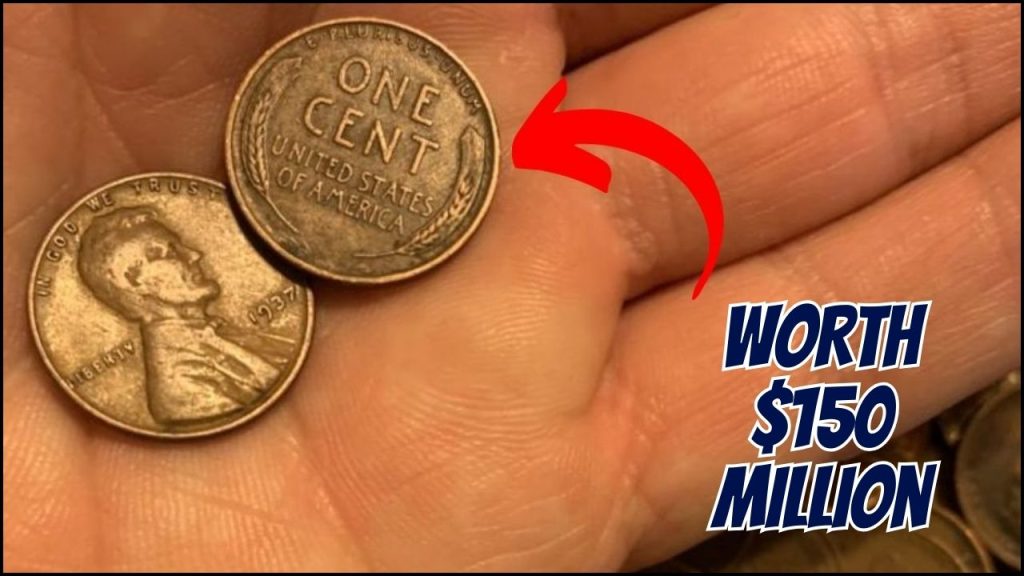
Among the billions of coins in circulation across the United States, one stands out as a legend—an incredibly rare Lincoln Wheat Penny reportedly worth a staggering $150 million. Though it appears no different at first glance from the pennies we use every day, this extraordinary coin’s value lies in its historical background, minting error, and immaculate condition. Its story serves as a reminder that priceless artifacts can sometimes be found in the most ordinary of places—perhaps even jingling in your pocket.
Origins of the Iconic Penny
The Lincoln Wheat Penny was introduced in 1909 to commemorate the 100th birthday of Abraham Lincoln. Designed by Victor D. Brenner, the coin features Lincoln’s profile on the obverse (front) and two wheat stalks on the reverse, earning it the nickname “Wheat Penny.” This design remained in use until 1958, when it was replaced with the Lincoln Memorial version. Its long production span and patriotic symbolism make it a favorite among collectors, who see it as more than just a coin—it’s a piece of American history.
A Rare Find in an Ordinary Roll
What makes the $150 million Lincoln Wheat Penny even more astonishing is how it was discovered—not in a private collection or museum, but inside a regular roll of pennies from a local bank. This surprise discovery has fueled dreams among collectors and everyday Americans alike, offering hope that such hidden treasures could still be in circulation, quietly passing from hand to hand.
The Secret Behind the Value
Several factors contribute to this coin’s astronomical valuation. Firstly, it features a rare minting error—it was struck on a bronze planchet during a time when steel was the required material due to wartime metal shortages. Only a handful of such bronze coins were ever made, and even fewer escaped into public circulation. Secondly, the coin is in near-pristine condition, a rarity in itself given the coin’s age and the harsh environments coins usually endure. These two elements—rarity and condition—are the holy grail of coin collecting, making this Lincoln Wheat Penny a true numismatic marvel.
Rare 1944 Wheat Penny Without Mint Mark: How to Identify Rare Coins Worth $110,000
Rare Bicentennial Quarter Worth Nearly $201K – Plus 6 More Coins Valued Over $25K Each
5 Rare Bicentennial Quarters Worth $2.5 Million – Fact vs. Fiction, Could Your Coin Be Valuable?
The $51 Million Rare Bicentennial Quarter – And 5 More Coins That Could Be Worth a Fortune
What to Look for in a Valuable Wheat Penny?
While the odds of stumbling upon a $150 million penny are incredibly slim, collectors should keep an eye out for specific key dates and mint marks. Some of the most sought-after Lincoln Wheat Pennies include:
- 1909-S VDB – The first year of issue, marked with designer Brenner’s initials.
- 1914-D – A low mintage year from the Denver Mint.
- 1943 Copper Penny – This was mistakenly made with copper during a year when steel was standard due to World War II.
The coin’s material can also be a vital clue. Changes in composition during wartime often resulted in rare variations that are now worth thousands—or even millions—of dollars.
Authenticating the Find
Should you come across a penny that looks like it might be special, professional authentication is the next essential step. Certified coin grading services and expert numismatists will evaluate it using a combination of methods: microscopic inspections, metal composition tests, and weight analysis. This thorough evaluation determines both the authenticity and value of the coin, especially for rare specimens that could be worth life-changing sums.
How to Handle and Preserve Rare Coins?
For those fortunate enough to suspect they’ve found a valuable coin, preservation is key. Experts recommend never cleaning rare coins, no matter how tempting it might be to shine them up. Even minor abrasions can drastically lower a coin’s value. Handle coins by their edges only and store them in protective holders in a cool, dry environment to avoid tarnishing or corrosion over time.
Educational Significance Beyond Price
Though its monetary worth grabs headlines, the Lincoln Wheat Penny also carries great educational value. It offers a tangible lesson in American history, economics, and the evolution of currency design. It also tells the story of how global events like wars can influence even the smallest details of everyday life—right down to the metal used in coins.
Inspiring a New Generation of Collectors
News of the $150 million Lincoln Wheat Penny has energized the coin collecting community. It has sparked a renewed interest in numismatics, motivating people—both seasoned collectors and newcomers—to dig through old coin jars and pocket change in hopes of finding hidden treasure. It’s a vivid reminder that even in today’s digital world, physical artifacts still hold immense value and historical relevance.
A Penny with a Priceless Legacy
While the discovery of such an incredibly valuable penny is rare, its existence proves that unexpected treasures still lie hidden. It adds to the mystique and allure of coin collecting, showing that items once seen as mundane can become priceless under the right circumstances. For enthusiasts and dreamers alike, the $150 million Lincoln Wheat Penny is more than just a coin—it’s a symbol of hope, history, and the thrill of the hunt.